Rational Varroa control

It’s the end of July … in the next two to three weeks the first eggs will be laid that will develop into the winter bees that get your colonies through to next spring. Protecting these winter bees is necessary to prevent overwintering colony losses.
I’ve written and lectured extensively on Varroa control and related topics for at least 5 years. The following article is published in August’s BBKA Newsletter and The Scottish Beekeeper. It provides an overview of what I term rational Varroa control.
I define this as effective mite management based upon our current understanding of the biology of bees and Varroa. The goal of this control is to minimise winter losses due to Varroa and viruses.
It is not a recipe with easy to follow if this, then that instructions. Neither does it provide a calendar-based guide of what to do and when to do it.
It does not even tell you what you should use for mite control.
Instead it focuses on the principles … understanding these will enable you to implement control strategies that help your bees, in your environment, survive.
This version is hyperlinked to additional, more expansive, posts on particular topics, is slightly better illustrated than those that appeared in print and contains some additional footnotes with caveats and exceptions.
Introduction
Despite almost 30 years experience of Varroa in the UK, this ectoparasitic mite of honey bees remains the greatest threat to bees and beekeeping. With the exception of those fortunate to live in mite-free regions, all beekeepers must manage the mite population in their hives or risk losing the colony to the viruses transmitted when Varroa feeds on developing pupae.
Fortunately, Varroa control is relatively straightforward; there are a range of approved and effective miticides that – used appropriately – reduce mite infestation levels significantly. The key words in that last sentence are ‘approved’, ‘effective’ and ‘used appropriately’. In reality annual colony losses, primarily occurring in the winter, often exceed 20% (Figure 1) and may be significantly higher in long or harsh winters {{1}}. Many of these losses are attributable to Varroa and viruses. It is therefore clear that many beekeepers are not successful in managing Varroa; either they are not treating at all, or they are treating inappropriately.
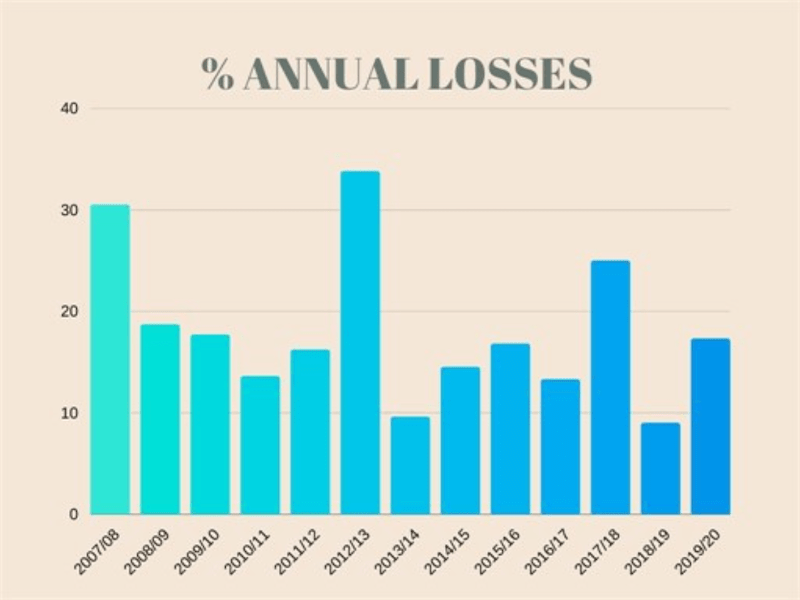
Figure 1. BBKA winter survival survey – larger studies (COLOSS and BIP) often show much higher losses
This article is primarily aimed at relatively inexperienced beekeepers, but may also help the more experienced who still suffer with high levels of winter losses. It emphasises the importance of two, correctly timed, appropriate miticide treatments per season that should ensure colony survival. It is not going to deal with treatments of questionable or minor efficacy. These include the use of small cell foundation, drone brood culling or sugar dusting. These may reduce mite levels, but insufficiently to benefit colony health. Nor will it discuss the use of any miticides (or application methods) that are not approved by the Veterinary Medicines Directorate. I will also not discuss treatment-free beekeeping, selection of mite-resistant bees or advanced colony manipulations like queen trapping. In my view any or all of these could or should be tried … but only once a beekeeper can routinely successfully overwinter colonies using strategies similar to those described here.
The problem
Varroa is an ectoparasitic mite that feeds on developing honey bee pupae. During feeding it transmits a range of honey bee viruses, the most important of which is deformed wing virus (DWV). DWV is present in honey bees in the absence of Varroa. In our studies, using sensitive PCR-based detection methods, we never detect bees – even those from mite-free regions of Scotland – without DWV. The virus is transmitted horizontally between bees during trophallaxis, and vertically from drones or the queen through sperm or eggs. These routes of transmission are rarely if ever associated with any significant levels of disease and virus only replicates to modest levels (perhaps 1-10 thousand viruses per bee). However, when Varroa transmits DWV the virus bypasses the bee’s natural defence mechanisms and replicates to very high levels in recipient pupae (billions per pupa, 1 – 10 million times higher than in unparasitised pupae). Studies from our laboratory have shown that ~75% of pupae with these high virus loads either do not emerge, or emerge exhibiting the characteristic “deformed wings” that give the virus its name (Figure 2; Gusachenko et al., Viruses 2020, 12, 532; doi:10.3390/v12050532). The ~25% of bees that do emerge and appear ‘normal’ exhibit a range of symptoms including reduced fitness, impaired learning and reduced foraging. However, most importantly they also exhibit reduced longevity. During the summer this is probably not critical; the lifespan of a worker is only ~6 weeks and, assuming the queen is laying well, there are thousands of half-sisters around with more being produced every day.
But during the winter, brood rearing either stops completely or drops to a very low level. The bees reared from late summer onwards are physiologically very different. These are the ‘winter bees’, also termed the diutinus bees (from the Latin meaning long-lived). Physiologically these bees resemble juvenile workers and they can survive for many months. And they need to … it is these bees that get the colony through the autumn, winter and into the following spring. They protect the queen, they thermoregulate the hive and, usually around the winter solstice, they start to rear small amounts of new brood for the season ahead.
The longevity of the bees in the hive in winter is critical to colony survival. If the winter bees have high DWV levels their longevity is reduced (in addition to the reduced numbers due to overt disease or non-viability). This means that the winter cluster shrinks in size faster than it would do otherwise. With reduced numbers of bees it cannot keep brood warm enough and so the colony fails to expand early the following season. In cold spells it may be unable to reach the food stores resulting in the colony perishing from ‘isolation starvation’. It may not be able to maintain sufficient warmth to protect the queen, or may simply freeze to death.
The goal of rational Varroa control
Successful overwintering requires lots of winter bees. The size of the winter cluster is directly related to its survival chances. Therefore the goal of rational Varroa control is to prevent the winter bees from being exposed to mites and mite-transmitted viruses during their development. Winter bee production is induced by a range of factors including photoperiod, nectar and pollen availability, brood and forager pheromones. Together these induce slowed behavioural maturation of the winter bees. This is not like flicking a switch, instead it is a seamless transition occurring as late summer segues into early autumn (Figure 3). Winter bee production is also influenced by the queen. Young queens lay later into the autumn, so increasing the numbers of winter bees.
It is important to note that these events are environment-driven, not calendar-driven. It will not happen at precisely the same time each year, or at the same time in different locations (or latitudes) each year.
To protect these winter bees the colony needs to be treated with an effective miticide before the majority of the winter bees are produced. This ensures that the developing winter bee pupae are not parasitised by virus-laden mites and so do not suffer from reduced longevity.
When are winter bees produced in the UK?
Unfortunately, I’m not aware of any direct studies of this. Scientists in Bern (49.9°N) in 2007/08, where the average temperatures in November and December were ~3°C, showed that the Varroa- and virus-reduced longevity of bees was first measurable in mid-November, 50 days after emergence. By extrapolation, the eggs must have been laid in the first week of September.
Doing large scale experiments of Varroa control is time-consuming and subject to the vagaries of the climate (and, as a molecular virologist, beyond me in terms of the resources needed). I have therefore used the well-established BEEHAVE program of colony development (from scientists in the University of Exeter; https://beehave-model.net/) to model the numbers of developing and adult bees, and the mite numbers in a colony. BEEHAVE by default uses environmental parameters (climate and forage) based upon data from Rothamsted (51.8°N). Using results from this model system, the bees present in the hive at the end of December – by definition the diutinus winter bees – were produced from eggs laid from early/mid August (Figure 4).
Whatever the precise date – and it will vary from season to season as indicated above – at some point in September the adult bee population starts to be entirely replaced with winter bees. Large numbers of these need to live until the following February or March to ensure the colony survives and is able to build up again once the queen starts laying.
When to treat – late summer
The numbers of pupae and adult bees present in the colony are plotted in Figure 4 using dashed lines. Adult bee number decrease in early spring until new brood is reared. The influence of the ‘June gap’ on pupal numbers is obvious. Brood rearing gradually tails off from early July and stops altogether sometime in late October or early November. The shaded area represents the period of winter bee production – from early/mid August until brood rearing stops.
Mite levels are indicated using solid lines. The impact on the mite population of treating in the middle of each month from July to November is shown (arrowed and labelled J, A, S, O and N) using the colours green, blue, red, cyan and black respectively. The absolute numbers of bees or mites is irrelevant, but bees (pupae and adults) are plotted on the left, and mites on the right hand axis, so they cannot be directly compared. The miticide treatment modelled was ‘applied’ for one month and was 95% effective, reproducing many licensed and approved products.
Mite levels peak in the colony in late September to October. If treatment does not occur until this time of the season then the majority of winter bees will have been reared in the presence of large amounts of mites. Unsurprisingly, the earlier the treatment is applied, the lower the mite levels during the period of winter bee production.
Rational Varroa control therefore involves treatment soon after the summer blossom honey is removed from the hive, so maximising the winter bees produced in the presence of low mite numbers. If you leave treatment until mid-September, you risk exposing the majority of winter bees to high levels of Varroa in the hive. If your primary crop is heather honey, which is not harvested until September, you may need to consider treating earlier in the summer – for example during the brood break when requeening or during swarm control.
Why treat in midwinter?
A key point to notice from Figure 4 is that, paradoxically, the earlier the miticide is applied, the higher the mite levels are at the end of the year. Compare the August (blue) and October (cyan) lines at year end for example. This is because mites that survive treatment – and some always do – subsequently reproduce in the small amount of brood reared late in the season. This is what necessitates a ‘midwinter’ treatment. Without it, mite levels increase inexorably year upon year, and cannot be controlled by a single late-summer treatment. Beekeepers bragging on social media that their mite drop after the winter treatment was zero probably applied the summer treatment too late to effectively protect their winter bees.
And when is midwinter?
Historically beekeepers apply the ‘midwinter’ treatment between Christmas and New Year. This is probably too late. The usual miticide used at this time is oxalic acid, a ‘one shot’ treatment that is ineffective against mites in capped cells. For maximum efficacy this must be applied when the colony is broodless. Brood rearing usually starts (if it ends at all, again this is climate-dependent) around the winter solstice. By delaying treatment until a lull in the Christmas festivities or even early January some mites will already be inaccessible in capped cells.
I check my colonies for brood – either by looking for biscuit-coloured cappings on the Varroa tray (Figure 5) or by quickly inspecting frames in the centre of the cluster – and usually treat in November or very early December. If I cannot check visually I apply the treatment during the first extended cold spell of the winter. By treating when the colony is broodless I can be certain my intervention will have maximal effect.
What to treat with?
I have deliberately avoided – other than mentioning oxalic acid – specific miticides. Rational Varroa control involves the choice of an appropriate miticide and its correct application. Examples of incorrect or inappropriate miticide choice include; use of Apistan when resistance is known to be very widespread, use of Apiguard when the average ambient temperature is below 15°C (which makes Apiguard of little use for effective control in much of Scotland) or the use of Api-Bioxal when there is capped brood present. In addition, use of a half-dose or a reduced period of application will both reduce efficacy and potentially lead to the selection of resistance in the mite population. Used correctly – the right dose at the right time and for the right duration – the majority of the currently licensed miticides are be capable of reducing mite levels by over 90%. If they do not, use one that does. Miticide choice should be dictated by your environment and the state of the colony.
All together now
Most beekeepers grossly underestimate the movement of bees (and their phoretic mites) between colonies. Numerous studies have shown that drifting and (to an even greater extent) robbing can result in the transfer of large numbers of mites from adjacent and, in the case of robbing, more distant colonies.
Rational Varroa control therefore involves treating all colonies within an apiary, and ideally the wider landscape, in a coordinated manner. In communal association apiaries (Figure 6), where beekeeping experience and therefore colony management and health can vary significantly, this is particularly important. Coordinated treatment is only relevant in late summer when bees are freely flying.
Swarms
Swarms originating from unmanaged or poorly managed colonies will have high mite levels. The bee population in a swarm is biased towards younger bees; these are the bees that phoretic mites preferentially associate with. Studies have shown that ~35% of the mite population of a colony leaves with the swarm.
Since swarms contain no sealed brood until ~9 days after they are hived oxalic acid is the most appropriate treatment. I usually treat them using vaporised oxalic acid late in the evening soon after they are hived (Figure 7). Even casts get this treatment and I have not experienced any issues with the queen not subsequently mating successfully. I’d prefer to have a queenless low-mite colony than a queenright one potentially riddled with Varroa.
Midseason mite treatment
The text above describes the mite management strategies I have used for several years. I apply Apivar immediately the summer honey is removed and treat with oxalic acid when broodless before the end of the year. Doing this has almost never required any additional midseason treatments; if mite levels are sufficiently low at the beginning of the season they cannot rise to dangerous levels before the late summer treatment. I still get winter colony losses, but they are almost always due to poor queen mating and rarely due to Varroa and viruses.
However, if midseason treatments are required – either because there are signs of overt infestation, because regular mite counts have shown there is a problem, or to have low mite colonies after the heather honey is collected – then there are two choices. Treat with MAQS which is approved for use when there are supers on the hive and, more importantly, is effective against mites in capped cells {{2}}. Alternatively, treat during swarm control. With care, the majority of splits (e.g. the Pagden artificial swarm or the nucleus method) can be performed to give a broodless period for both the queenright (Figure 8) and queenless partitions. That being the case, a single application of an oxalic acid-containing miticide can be very effective in controlling the mite population.
Costs
Many beekeepers complain about the cost of licensed and approved miticides. However, some perspective is needed. A colony with low levels of mites will be more likely to survive overwinter, so reducing the costs of replacement bees. In addition, a healthy colony will be a stronger colony, and therefore much more likely to produce a good crop of honey (and potentially an additional nuc). Over the last 5-6 years my miticide costs are equivalent to one jar of honey per colony per year. This is an insignificant amount to pay for healthy colonies.
Summary
Rational Varroa control requires an understanding of the goals of treatment – protecting the winter bees and minimising mite levels for the beginning of the following season – and an appreciation of how this can best be achieved using miticides appropriate for the environment and the state of the colony. Like so much of beekeeping, it involves judgement of the colony and will vary from season to season and your location. I’ve applied my midwinter treatment as early as the end of October or as late as mid-December, reflecting variation in timing of the broodless period. Rational Varroa control also involves an understanding of the biology of bees and an awareness of the influence of beekeeping (e.g. crowding colonies in apiaries which increases mite and disease transmission) on our bees. However, none of this is difficult, expensive or time consuming … and the benefits in terms of strong, healthy, productive colonies are considerable.
Note
A version of this post appeared in the BBKA Newsletter, August 2021
A version of this post appeared in The Scottish Beekeeper, August 2021
{{1}}: Caveat … small scale surveys of 1-2% of beekeepers are likely to be under-representative of true losses, suffering also from the “Amazon review” factor where those with particularly good, or bad, experiences dominate the responses. The large scale BIP survey (BIP are now defunct it seems - the website generates nothing but 404's ... sorry) in the USA has reported annual losses of over 40% (or winter losses averaging over 30%) in 6 of the last 8 years.
{{2}}: Note – I have no experience using MAQS but am aware there are major problems using it when temperatures are high.
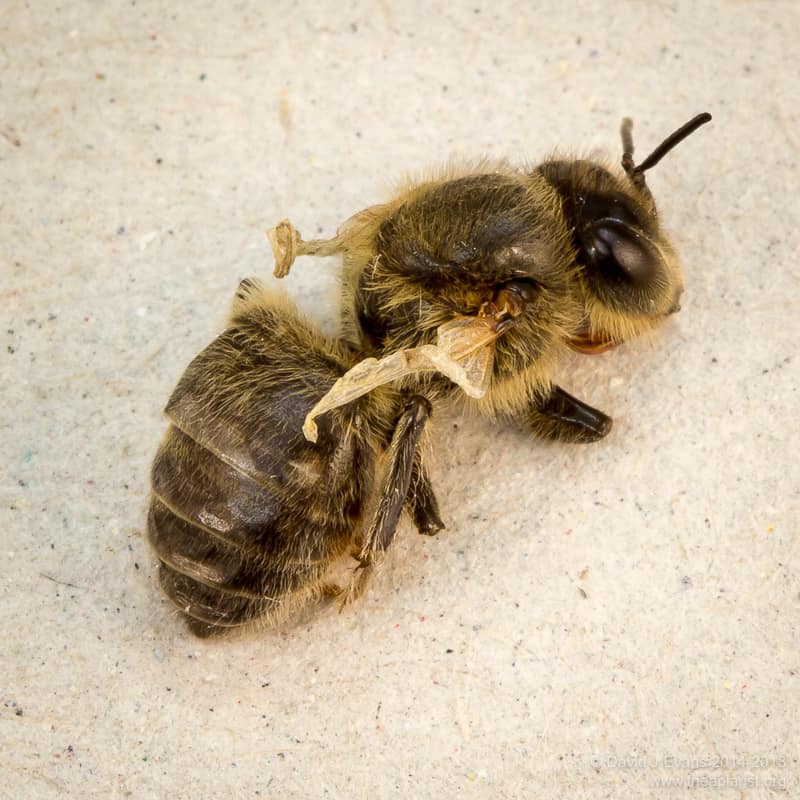
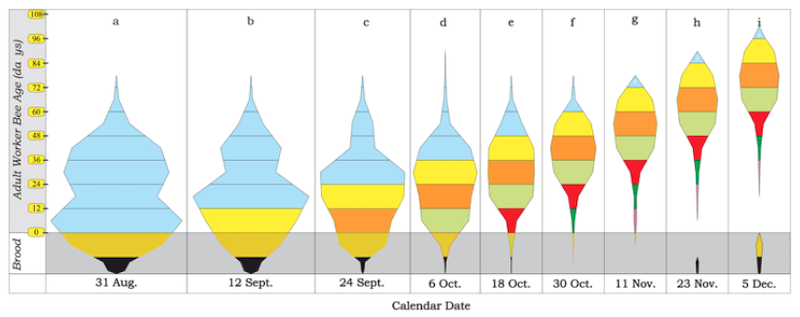
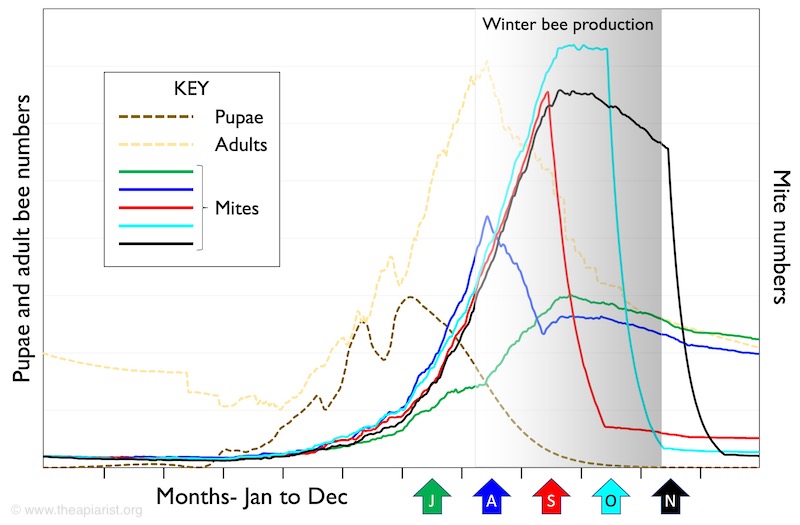
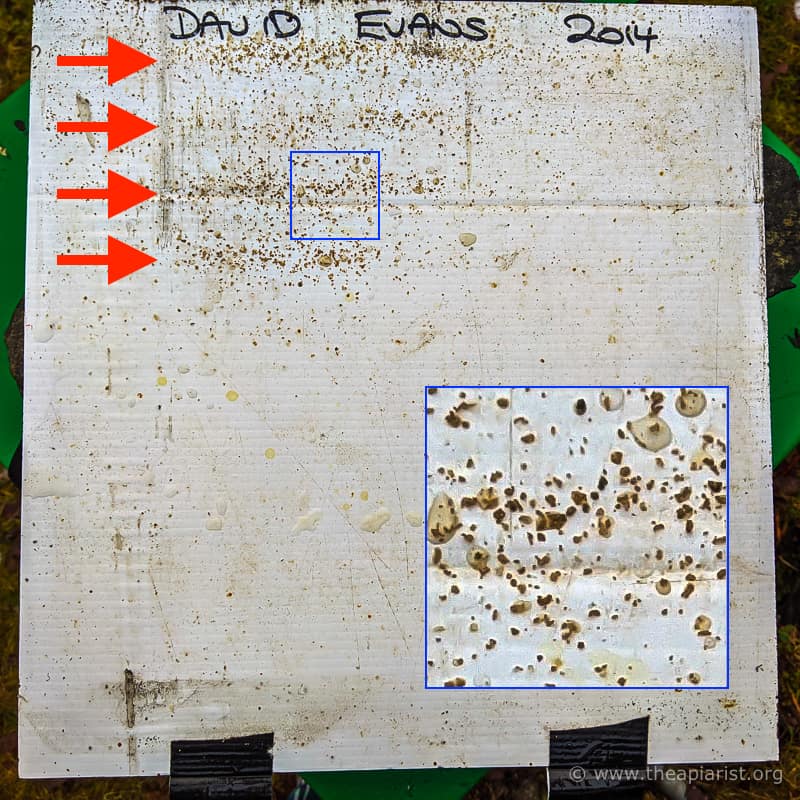
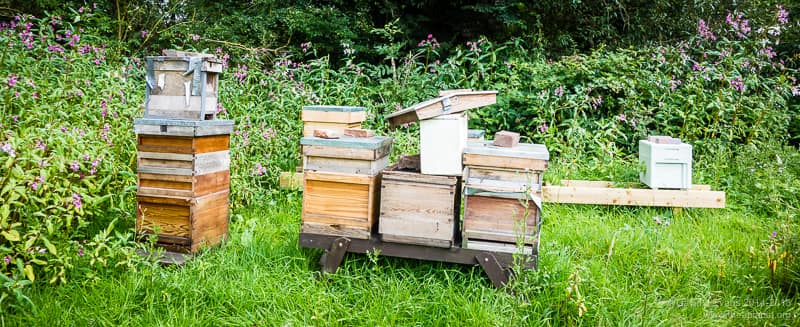
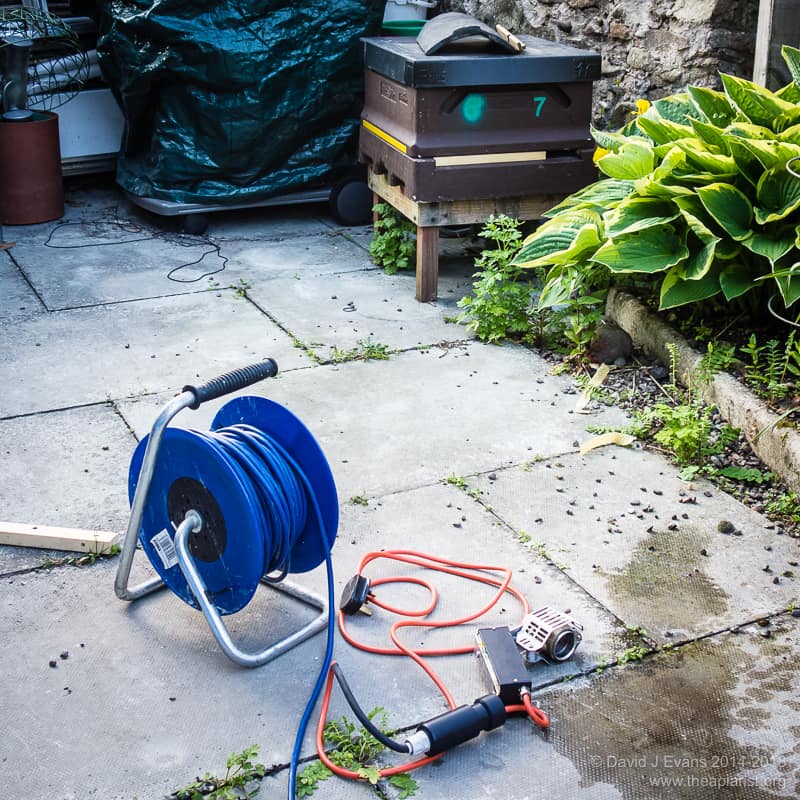
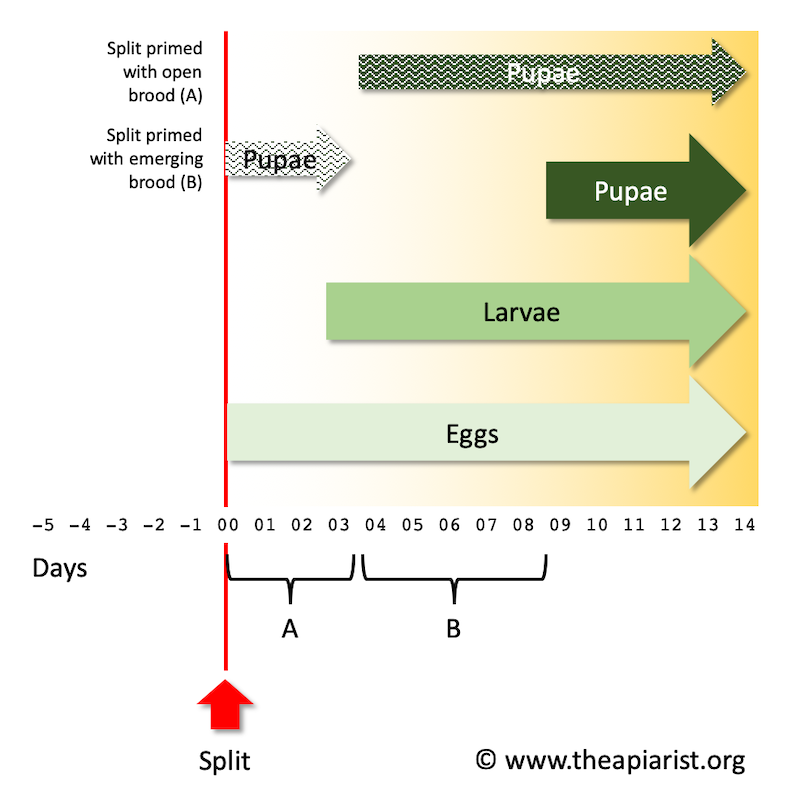
Join the discussion ...